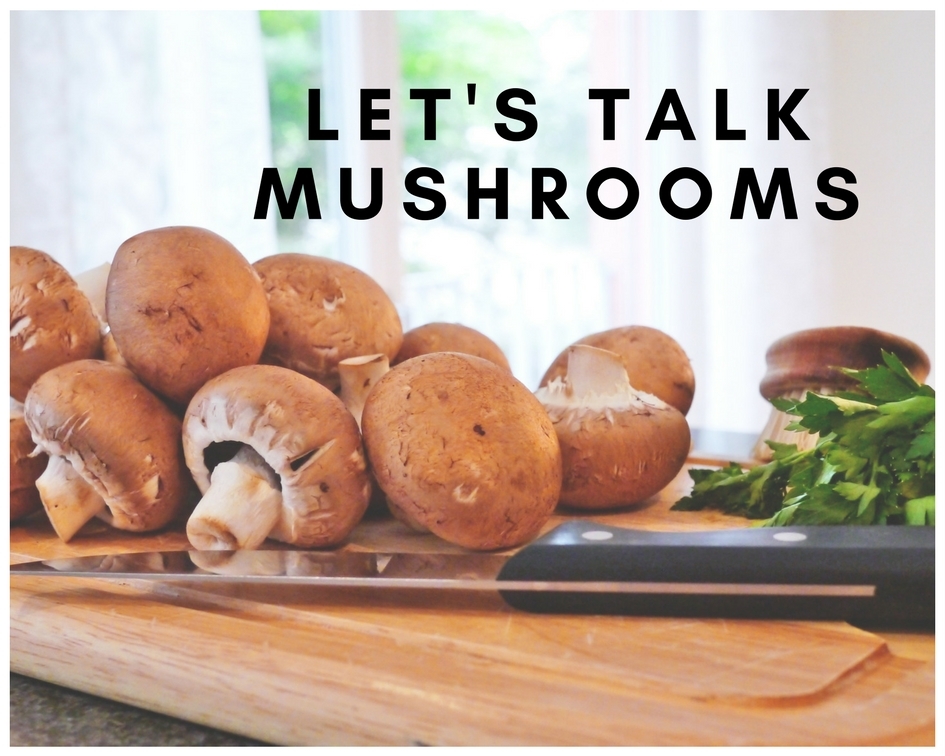4,600 years ago, Egyptians believed mushrooms were the plant of immortality and made them available to royalty only. This would ensure that the pharaohs of Egypt had their fair share of the delicacy.
Thankfully, times have changed. Now, mushrooms are grown indoors and with some varieties available year around to everyone. Back in 2013, 900 million pounds of mushrooms were grown in the United States. We’re sure that number has only grown since then.
But why the fuss about mushrooms? They’re hearty, healthy and versatile in cooking. Mushrooms can be sauteed, grilled, turned into a “burger” or roasted and are a great option for vegetarians to add “meat” to their meals.
A popular word when describing food recently is umami. It’s is one of the five basic tastes along with sweetness, sourness, bitterness, and saltiness. If someone mentions an umami flavor, they are basically saying it has a savory flavor. Mushrooms add an umami flavor to a recipe which is all the rage these days.
So let’s talk mushrooms…
Health Benefits Mushrooms
Mushrooms are often considered a vegetable because they have many of the same nutrients. They also provide some of the same nutrients found in meat and beans. But because of their cellular structure, they are actually fungi. There are a lot of vitamins and minerals packed into them.
- Vitamin D: Mushrooms are the only natural food source of vitamin D in the produce aisle. Supplements are available to boost vitamin D, but you can get almost a day’s worth of vitamin D from 1 portabella mushroom or 4-5 white button or cremini mushrooms.
- B Vitamins: B vitamins, like riboflavin (maintains healthy red blood cells), niacin (promotes healthy skin and digestion) and pantothenic acid (helps with hormones), provide energy while breaking down fats, carbs and proteins. Mushrooms are a great source for them.
- Minerals: Mushrooms also have important minerals that the body needs like Selenium (an antioxidant that protects body cells from damage), Ergothioneine (another antioxidant), Copper (helps make red blood cells), and Potassium (helps with muscles, nerves and helps to maintain mineral balance).
Common Types of Mushrooms
- Button (White Mushrooms): This is the most popular mushroom in the United States. They have a mild taste and go well with everything. An ideal topper for pizza and burgers.
- Shiitake: Known for their smoky flavor, shiitakes are extremely popular and can be pricey. If purchased dried, they have a more intense flavor (rehydrate before using). Sauteeing is the best way to prepare these as they’re very delicate and you want to maximize their flavor. They’re most popular in Chinese cuisine.
- Cremini (Baby Portabellas): Creminis are similar in size to a button mushroom, but they have a light tan appearance and are firmer. Their deep, earthy flavor makes them a great pairing for steak and a hearty side dish option.
- Portobello: These are a cousin to the cremini. They have a meat-like, hearty flavor. A fantastic “burger” option.
- Porcini: Porcini mushrooms are a bit pricier than most mushrooms and have a nutty flavor. In the United States, porcini mushrooms are usually sold dried. To rehydrate them, steep them in boiling water for around 15 minutes. They’re great for soups and sauces.
How to Select and Store Mushrooms
- When looking for mushrooms, make sure they are firm, have a smooth texture and a tightly closed cap. If they appear dried out and withered, choose another one. That means they are not at their peak freshness.
- Never soak a mushroom. It’s basically a sponge and they’ll absorb the water. Too much water means they’ll turn slimy quicker or, if being cooked immediately, not saute properly. Instead, dampen a cloth or paper towel. Brush off any dirt and dry with a paper towel.
- Trim the stems from the mushrooms (if necessary) and store in the original packaging or a porous container, like a paper bag. You want air to be able to get at them. Depending on the mushroom, they could keep fresh in the fridge for up to a week.
